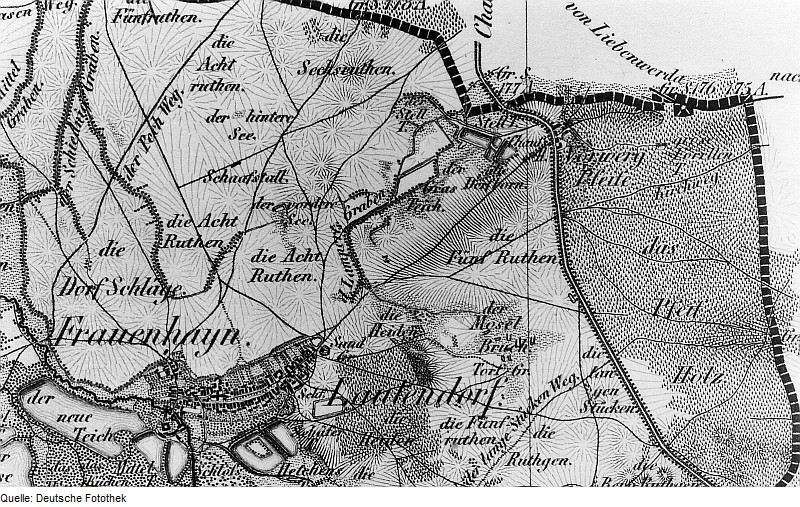 Frauenhain means women hill and the communitgy was in Prussia. When Charles Ferdinand was born and grew up there the community consisted of about 650 people. Today is is an hour north of Dresden.
Frauenhain means women hill and the communitgy was in Prussia. When Charles Ferdinand was born and grew up there the community consisted of about 650 people. Today is is an hour north of Dresden.
Frauenhain is a district of the municipality Röderaue north of Grossenhain in the northern Saxon district of Meißen . With about 1200 inhabitants, it is the administrative seat of the municipality.
Frauenhain is the largest district of Röderaues and the seat of the municipal administration. The place is surrounded by many ponds such as the middle pond , the castle pond and the shepherd pond and is flowed through by the Great Roeder . The state road 90 from Gröditz leads through Frauenhain to federal road 101 and district road 8582. Frauenhain has a stop on the Berlin – Dresden railway line .
In 1780 it was purchased by the Royal Saxon Chamberlain von Weissenbach. Around 1860 it was owned by the von Globig family. Between 1856 and 1875, Frauenhain belonged to the Grossenhain judicial office , then to the Grossenhain district administration. (Wikipedia)
There is also some evidence the name Kroksh is Americanized. The German name may be Kroksch. The document below says Kroksch is the name for the man who sketches maps. That may not be completely accurate. According to Peter Bertschinger, genealogist: "The term Kroki is especially used in German speaking Switzerland (Scouts and Swiss Army). It means a sketch map drawn manually to show a specific location. See
There is also some evidence the name Kroksh is Americanized. The German name may be Kroksch. The document below says Kroksch is the name for the man who sketches maps. That may not be completely accurate. According to Peter Bertschinger, genealogist: "The term Kroki is especially used in German speaking Switzerland (Scouts and Swiss Army). It means a sketch map drawn manually to show a specific location. See
https://de.wikipedia.org/wiki/Croquis It is derived from the french le croquis, meaning the same. When I was in the boy scouts I was very good in drawing those, that is why I like geographical maps and geographical names etc." So there may be a relationship between map drawing and the name Kroksh.
 |
Gothic village church built in 1375 with a winged altar from
around 1510 and with the oldest bell tower in Saxony.
|
|






